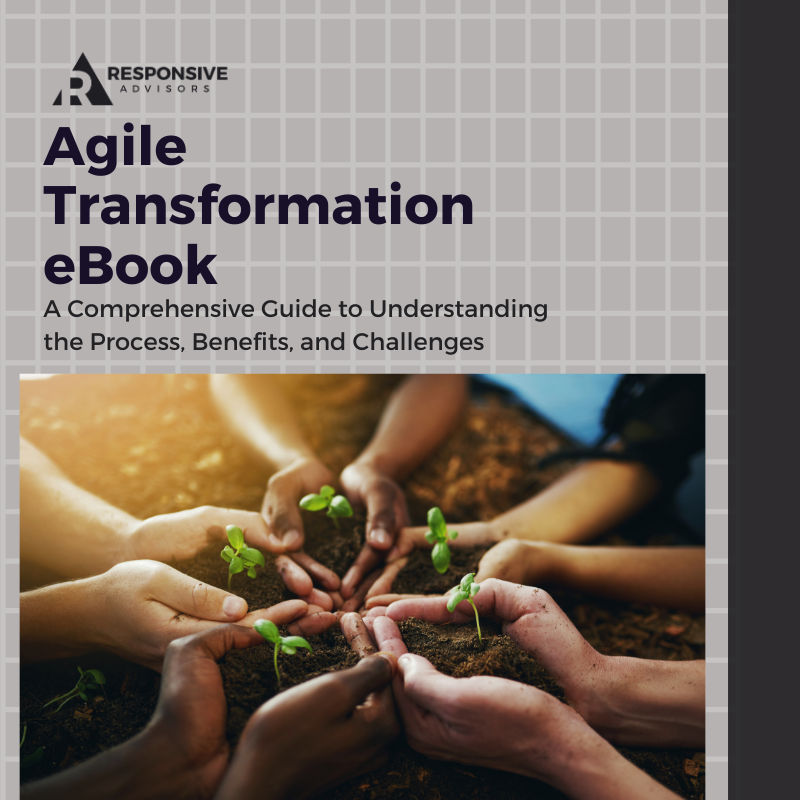Agile is often reduced to buzzwords about mindsets or methodologies, but its real value runs deeper. In this post, I will explain how Agile as a strategy helps teams adapt, learn, and deliver meaningful results in a constantly changing world.
Lean Thinking as a Foundation
At the core of Scrum is lean thinking — the discipline of maximizing value while eliminating waste. It’s about simplifying work, focusing on what truly matters, and empowering teams to deliver outcomes that customers actually need. Lean thinking teaches organizations to spot inefficiencies and streamline their processes continuously.
One of the most tangible benefits of Agile product development is the ability to achieve more with the same resources. Instead of investing time and money in unnecessary documentation, meetings, or handoffs, teams use empirical data to guide their next steps. This approach saves effort while improving transparency and trust across the organization. Agile teams create measurable results by focusing on learning and outcomes instead of output.
Continuous Improvement in Action

Continuous improvement isn’t just a nice idea — it’s a built-in part of every Sprint. Scrum Teams use Retrospectives to examine what went well, what didn’t, and what can be improved for the next cycle. This creates a rhythm of reflection and adaptation that keeps teams evolving instead of stagnating. This practice highlights another essential benefit of Agile product development: the system naturally encourages better ways of working. Over time, teams become more efficient, communication improves, and obstacles are removed quickly. Small, consistent improvements compound to create significant performance gains and more predictable delivery of value. It’s a cycle that drives momentum, morale, and mastery.
Adapting to Change, Not Resisting It
The world doesn’t slow down for anyone. Markets shift, technology evolves, and customer expectations continue to rise. Traditional, rigid approaches often break under the weight of that change. Agile thinking flips this problem on its head by viewing change as an opportunity rather than a threat.
The benefits of Agile product development include the ability to respond to new information at any moment. Instead of sticking to outdated plans, teams can pivot based on data, feedback, or new priorities. This adaptability protects organizations from disruption and positions them to seize opportunities faster than competitors. When change comes — and it always does — agility ensures you’re ready, not reactive.
Learning Through Feedback and Experience
Agility thrives on learning. Every iteration, Sprint Review, or customer conversation provides valuable feedback. This constant feedback loop ensures that teams aren’t building in isolation or chasing assumptions. Instead, they validate ideas quickly and adjust based on what’s working.
This process represents one of the most powerful benefits of Agile product development — the transformation of uncertainty into knowledge. Teams reduce risk by testing early, learning fast, and applying those lessons in real time. Organizations that value experimentation over perfection create environments where innovation flourishes, and employees stay engaged because their work directly impacts real outcomes.
Adaptability Is the Real Advantage
As technology accelerates and industries transform, adaptability becomes the ultimate strength. The benefits of Agile product development are what allow teams to survive and thrive — not because they’re the fastest, but because they’re the most capable of responding to change.
To ignore agility is to accept defeat when disruption arrives. To embrace it is to evolve continuously — improving how teams think, collaborate, and deliver value. Agility isn’t a process or a mindset—it’s the result of a mindset that helps organizations meet uncertainty with confidence and turn change into opportunity.
By embracing the benefits of Agile product development, teams create an environment where learning never stops and innovation becomes second nature. They adapt faster, make smarter decisions, and build products that truly meet evolving customer needs. In an ever-changing world, agility isn’t just how successful teams work — it’s how they lead, grow, and stay ahead.
Agile businesses learn fast and act quickly. If you're in the process of Agile transformation, get the ebook on the subject. This quick-read guide explains how to build a culture that adapts, learns, grows, and adapts quickly to change in an uncertain and ever-evolving world.


Continuous Learning is at the heart of great Scrum Teams
If you're ready to grow your understanding and improve how your team works, explore our upcoming Professional Scrum courses.
Want to see how Responsive Advisors can help you or your organization succeed? Learn more at responsiveadvisors.com.
